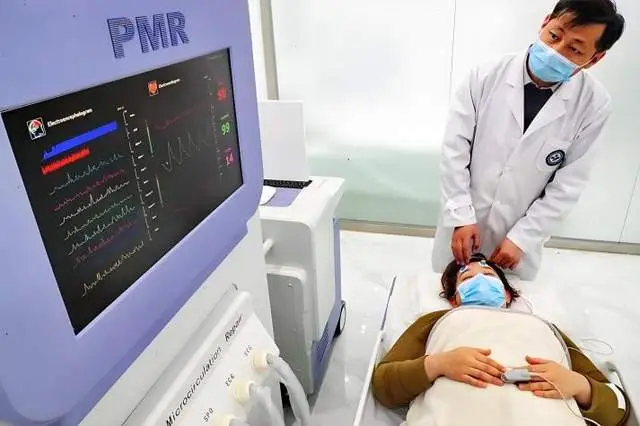Everyone yearns for a healthy and long life. What "life secrets" do those who have lived past a century possess?
Is it innate genetic advantages or acquired wisdom?
In recent years, a scientific study involving hundreds of thousands of people has revealed a common health trait among centenarians: their blood vessels appear younger and healthier than those of their peers.
◆ Scientific Evidence: Vascular Health is the Key to Centenarian Longevity
"Your life span is as long as your blood vessels," a long-standing health adage, now firmly supported by authoritative medical research. In August 2025, a subsidiary of the internationally renowned medical journal The Lancet published a follow-up study of over 270,000 Swedish residents, providing solid evidence that "vascular health determines lifespan."
The study selected individuals born between 1920 and 1922 and followed them for 30 years, starting at age 70. The study compared and analyzed the differences in health in later life between centenarians and non-centenarians. The findings are thought-provoking: centenarians are not immune to illness; rather, their cardiovascular systems age more slowly and disease onset occurs later. Specifically, they accumulate fewer illnesses throughout their lives, particularly cardiovascular disease, which is significantly lower than their peers. At 70, cardiovascular disease accounted for 51.6% of the total disease burden among non-centenarians, compared to only 24.8% among centenarians.
This suggests that a youthful cardiovascular system is a core advantage of centenarians. Maintaining healthy blood vessels not only reduces the burden of disease but also lays a solid foundation for longevity.
◆ Empowered by Technology: Pulsed Magnetic Microcirculation Therapy Enhances Vascular Health
With the advancement of medical technology, improving vascular health no longer relies solely on traditional methods. PMR (Pulsed Magnetic Microcirculation Therapy), a novel physical therapy technique, offers a new option for maintaining vascular function.

This technology combines extremely low-frequency pulsed magnetic field control with cell membrane potential regulation. By altering red blood cell membrane potential and reducing red blood cell aggregation, it optimizes microcirculation at the root, thereby providing multi-dimensional protective effects on blood vessels:
Dilates microvessels and opens up "circulatory peripheries": Pulsed magnetic fields precisely target peripheral microvessels (such as capillaries, arterioles, and venules), regulating vascular smooth muscle relaxation, increasing microvascular lumen volume, and reducing blood flow resistance.
This is like widening a blocked path, allowing blood to flow smoothly through tissue spaces, resolving the problem of insufficient blood supply caused by microcirculatory disorders.
Maintains vascular wall elasticity and delays vascular aging: Vascular wall elasticity depends on smooth muscle cell function and endothelial integrity. Pulsed magnetic therapy uses gentle physical stimulation to balance the contraction and relaxation of vascular smooth muscle, reducing smooth muscle stiffness caused by ischemia and hypoxia.
At the same time, improved microcirculation provides sufficient nutrients and oxygen to vascular endothelial cells, protecting endothelial metabolic function and slowing the progression of vascular sclerosis.
Reduces blood viscosity and alleviates the "transport burden" on blood vessels: Excessive blood viscosity increases blood flow resistance and may induce thrombosis over time. Pulsed magnetic fields can reduce red blood cell clumping, lower blood viscosity, and allow blood to flow more smoothly within the vessels, reducing friction and pressure on the vessel walls.
Optimizes material exchange and protects the vascular "internal environment": The core function of blood vessels is to transport oxygen and nutrients and excrete metabolic waste (such as lactic acid and carbon dioxide).
Improving microcirculation significantly increases the contact area and exchange efficiency between blood and tissue cells, ensuring efficient oxygen supply and accelerating waste excretion, preventing waste accumulation and damage to the vascular endothelium.
◆ Daily Practice: Four "Cardiovascular-Favored" Lifestyles Everyone Can Embrace
Technology is only a supplement; daily habits are the cornerstone of healthy blood vessels. Based on multiple authoritative studies, the following four lifestyles have been shown to be most beneficial for cardiovascular health and can be easily implemented by the average person:
1. Optimal Sleep Time: Go to bed between 10:00 PM and 10:59 PM
Sleep isn't about "earlier is better"; it's about aligning with your circadian rhythm. A 2021 study of over 100,000 people published in the European Heart Journal–Digital Health showed that falling asleep between 10:00 PM and 10:59 PM was associated with the lowest risk of cardiovascular disease. Compared to this time, falling asleep between 11:00 PM and 11:59 PM was associated with a 12% higher risk, falling asleep after midnight was associated with a 25% higher risk, and falling asleep before 10:00 PM was associated with a 24% higher risk. Regularly sleeping during this time allows your cardiovascular system to rest adequately at night, reducing the damage to your blood vessels caused by circadian rhythm disruptions.

2. Best Exercise: Racket sports are top, but walking is also effective.
Exercise doesn't have to be high-intensity; choosing the right type is more important. A 2016 international study published in the British Journal of Sports Medicine found that among cardiovascular exercises, racket sports (such as badminton, tennis, and squash) offer the best cardiovascular protection, reducing the risk of death from cardiovascular disease by 56%, followed by swimming (41%) and aerobic exercise (36%).
If you don't have a regular exercise routine, walking is the easiest option. A 2024 study published in the British Journal of Sports Medicine found that walking more than 2,200 steps per day can reduce the risk of death and cardiovascular disease, regardless of how long you sit. The greatest risk reduction was achieved with approximately 10,000 steps per day.
3. Best Time to Exercise: Late afternoon, 11:00 AM - 5:00 PM.
The timing of exercise also impacts health benefits. A 2023 study published in Nature Communications showed that outdoor exercise in the afternoon, between 11:00 AM and 5:00 PM, can further reduce all-cause and cardiovascular mortality compared to other times of the day. Human function is optimal during this time, and the fresh air in outdoor environments (such as parks and woodlands) can also improve mental health, allowing for both vascular health and a positive mood.
4. Optimal Diet: Consume 6 Key Food Groups and Follow 11 Dietary Principles
Eating right is more important than eating expensively. A 2023 study published in the European Heart Journal, which included nearly 250,000 people, found that six food groups—fruits, vegetables, nuts, legumes, fish, and full-fat dairy products—are the core ingredients for reducing cardiovascular disease risk. Eating enough of these six food groups can significantly improve cardiovascular health.

The longevity of centenarians is not accidental; it is the inevitable result of long-term vascular health. From scientific research revealing that "young blood vessels equal a longer lifespan" to technology-enabled adjunctive treatments and practical, everyday sleep, exercise, and dietary habits, the methods for maintaining healthy blood vessels are all around us.
Rather than envy the longevity of centenarians, it's better to start taking scientific care of your blood vessels now—after all, treating your blood vessels well means living longer.

%20--%3e%3c!DOCTYPE%20svg%20PUBLIC%20'-//W3C//DTD%20SVG%201.1//EN'%20'http://www.w3.org/Graphics/SVG/1.1/DTD/svg11.dtd'%3e%3csvg%20version='1.1'%20id='图层_1'%20xmlns='http://www.w3.org/2000/svg'%20xmlns:xlink='http://www.w3.org/1999/xlink'%20x='0px'%20y='0px'%20width='256px'%20height='256px'%20viewBox='0%200%20256%20256'%20enable-background='new%200%200%20256%20256'%20xml:space='preserve'%3e%3cpath%20fill='%23FFFFFF'%20d='M194.597,24.009h35.292l-77.094,88.082l90.697,119.881h-71.021l-55.607-72.668L53.229,232.01H17.92%20l82.469-94.227L13.349,24.009h72.813l50.286,66.45l58.148-66.469V24.009z%20M182.217,210.889h19.566L75.538,44.014H54.583%20L182.217,210.889z'/%3e%3c/svg%3e)




